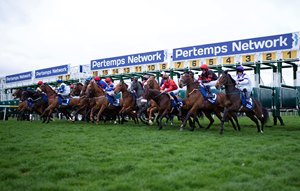British Racing Reveals 'Premier' Tier, Other Reforms


A new Premier tier of racing, a two-hour Saturday shop window for the sport, and the trial of six Sunday evening floodlit fixtures are among the innovations set to be introduced next year after being approved by the British Horseracing Authority board this week.
There are also plans to increase the competitiveness of British racing in the face of falling field sizes with a reduction of 300 jumps races across the year and the transfer of some flat races from the summer to the autumn and early winter, along with better quality racing on Sunday afternoons, including Premier fixtures.
The proposals, formulated by the cross-industry commercial committee, are set to be implemented and tested for an initial two-year period, the governing body said May 25.
The aim is to grow the sport's reach, appeal to new fans, and better engage existing customers with the hope that it will generate extra revenues, which will, in turn, boost prize money levels.
Premier racing, a concept put forward by former BHB chair Peter Savill last year, will be the top tier of the sport with higher prize money and more competitive top-quality racing featuring the best horses.
The most controversial aspect of Premier racing has been the introduction of a two-hour slot on "most" Saturday afternoons which would feature two Premier meetings and one other meeting.
Smaller courses have voiced concern about their lucrative Saturday meetings being moved to either earlier or later slots as a result, with the threat of legal action having been raised.

BHA chair Joe Saumarez Smith said: "The BHA board endorsed and approved these recommendations because it was clear to us that they were necessary and in the best interests of the sport.
"The information that was presented by the sport's commercial committee included detailed consideration of both the upside and downside of all proposals. This allowed the board to make its decisions based on the complete picture."
Saumarez Smith said it was "inevitable" that not all would agree with the proposals but added that the sport's new governance system which made the BHA board the ultimate decision-making body had been created for just such circumstances.
He added: "The changes will be tested over an initial two-year period and will be closely evaluated to see how well they work, with the aim of permanently adopting the things that have been a success."
The agreement of the core principles for the 2024 fixture list is the first phase of the wider industry strategy work that the sport's leadership embarked upon last year.
BHA chief executive Julie Harrington said: "When the industry's leaders came together in autumn last year, we agreed unanimously that innovation in the way the sport is presented is an absolute necessity.
"The core principles approved by the BHA board were identified as the most time-sensitive area and the foundation of our wider approach.
"There is still a huge amount to do as we seek to grow and future-proof British racing, but the development of a fixture list that seeks to attract new fans and grow the appeal of our sport to existing customers represents an important first step."
The BHA said further details to support the implementation of the core principles would be developed and refined in the coming weeks, including the vital subject of funding, which will include submissions to the Levy Board.
The governing body also said talks would take place about how to support racing's workforce in light of the changes, including discussions and recommendations around the number of breaks in the calendar.
Data Key to the Decision-Making Process
Those behind the significant changes to the fixture list approved by the BHA board this week stressed that their actions were driven by data analysis.
The commercial committee had access to figures from betting companies, the Levy Board, and racecourses, and were able to see how revenues flow into the sport.
It also received customer insight, including from the Horseracing Bettors Forum, and input from the industry's Fixtures and Funding Group.
Saumarez Smith said: "At the heart of growing the sport is using data properly. For too long, racing has made decisions based on sentiment or partial information, and we are now starting to make genuinely data-driven, evidence-based decisions about what is best for racing."
